Home>Garden Essentials>What Is Turf Grass
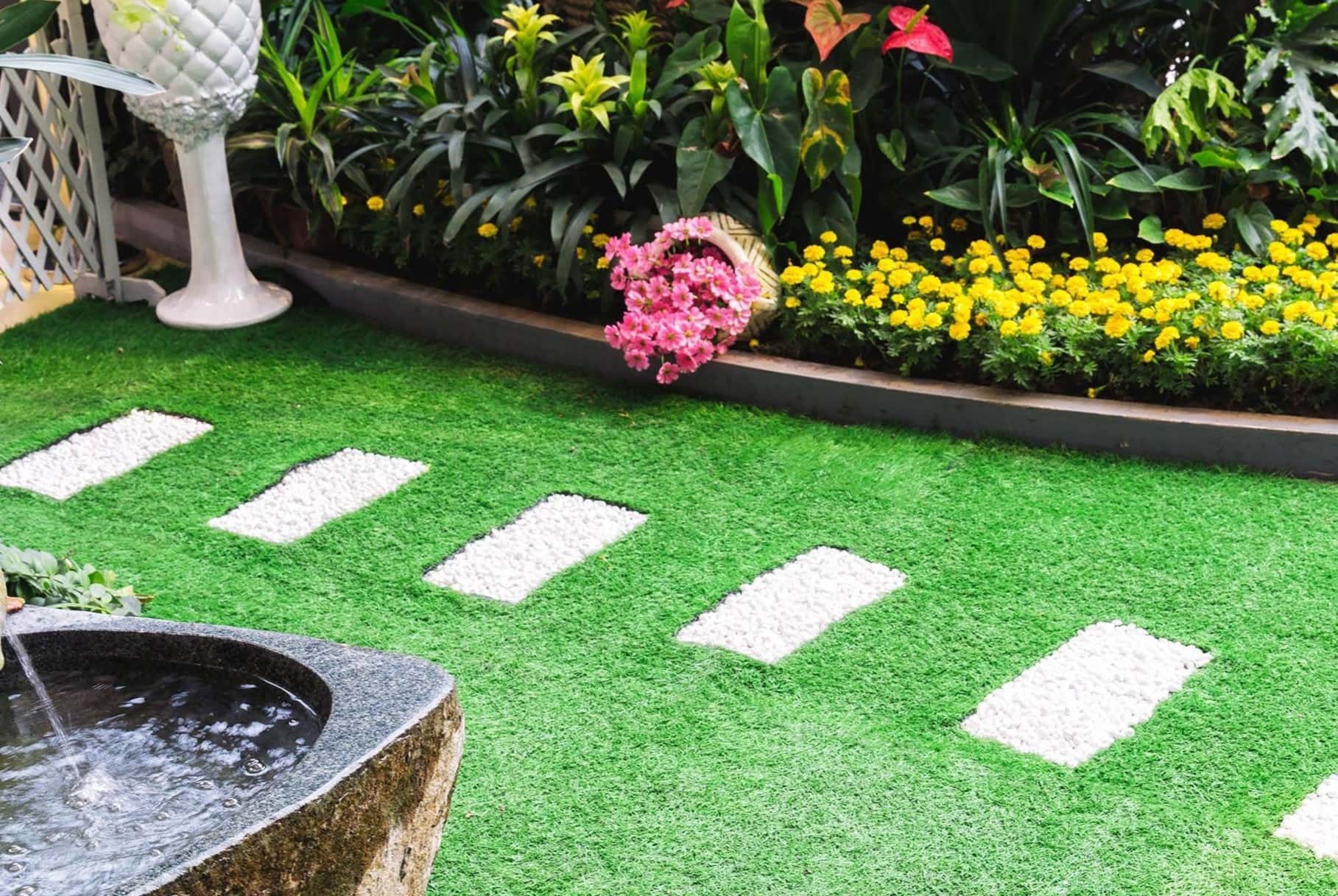

Garden Essentials
What Is Turf Grass
Modified: September 2, 2024
Discover the benefits of using turf grass in your garden. Transform your outdoor space with this low-maintenance, lush and durable option.
(Many of the links in this article redirect to a specific reviewed product. Your purchase of these products through affiliate links helps to generate commission for Storables.com, at no extra cost. Learn more)
What Is Turfgrass
Turfgrass is a type of grass that is grown and cultivated specifically for its ability to form a dense and uniform turf. It is commonly used in lawns, sports fields, golf courses, and other recreational areas. Turfgrass provides a lush and green carpet-like covering on the ground, enhancing the aesthetic appeal of outdoor spaces and providing a comfortable surface for various activities.
Turfgrass is a versatile and resilient plant that is able to withstand heavy foot traffic, recover quickly from damage, and adapt to different environmental conditions. It is known for its ability to create a visually appealing and functional landscape, contributing to the overall beauty and functionality of outdoor spaces.
There are several key characteristics that distinguish turfgrass from other types of grass. One of the main characteristics is its ability to form a dense and tightly matted turf, which can help prevent soil erosion and weed growth. Additionally, turfgrass has the ability to spread horizontally through stolons or rhizomes, allowing it to cover large areas and fill in gaps on its own.
Another distinguishing feature of turfgrass is its regular and uniform growth habit. This is achieved through careful selection and breeding of grass varieties that exhibit desirable characteristics such as fine texture, dark green color, and uniform growth pattern. These characteristics not only enhance the visual appeal of turfgrass but also contribute to its overall functionality and performance.
In summary, turfgrass is a type of grass that is cultivated for its ability to form a dense and uniform turf. It is highly valued for its aesthetic appeal, functional benefits, and ability to withstand various environmental conditions. Whether it is in a backyard, a sports field, or a golf course, turfgrass plays a vital role in enhancing outdoor spaces and providing a lush and comfortable surface for various activities.
Key Takeaways:
- Turfgrass is a versatile and resilient type of grass that forms lush, dense lawns, making outdoor spaces visually appealing and suitable for various activities. It provides erosion control and contributes to air and water quality.
- Proper maintenance of turfgrass, including mowing, watering, and pest control, ensures a healthy and vibrant lawn. Turfgrass offers benefits such as cooling the environment, reducing noise, and providing safe recreational surfaces.
Read more: What Is Zeolite Turf Infill
Introduction
Gardening is an enriching and rewarding experience that allows us to connect with nature and create beautiful outdoor spaces. One essential aspect of gardening is the cultivation and maintenance of turfgrass. Turfgrass, also known as lawn grass, is a crucial component of many landscapes, providing a vibrant and inviting carpet-like covering.
In this article, we will delve into the world of turfgrass, exploring its definition, history, uses, different types, maintenance requirements, benefits, and environmental considerations. Whether you are a homeowner looking to create a picturesque lawn or a sports field manager seeking to maintain a safe and playable surface, understanding the intricacies of turfgrass is essential.
Throughout history, humans have valued and utilized turfgrass for its aesthetic, functional, and recreational benefits. From the pristine lawns of stately manors to the meticulously maintained sports fields, turfgrass has played a significant role in enhancing outdoor spaces and providing a lush and inviting environment for various activities.
As we explore the world of turfgrass, we will discover the different types that exist, each with their own unique characteristics and suitability for specific environments or uses. We will also explore the maintenance practices necessary to keep turfgrass healthy and vibrant, such as mowing, watering, fertilizing, and pest control.
Beyond its visual appeal and functional benefits, turfgrass also offers numerous environmental advantages. It helps to improve air and water quality, reduces soil erosion, and provides a habitat for various wildlife species. Balancing these benefits with potential environmental concerns will be an essential part of the discussion as we consider sustainable practices in turfgrass management.
So, whether you are a gardening enthusiast, a sports field professional, or simply curious about the world of turfgrass, join us on this journey as we explore the intricacies of this fascinating and versatile plant. Together, we will gain a deeper understanding of turfgrass and how it can enhance our outdoor spaces while promoting environmental sustainability.
Definition of Turfgrass
Turfgrass, simply put, refers to a group of grass species that are cultivated and grown for their ability to form a dense and uniform turf or lawn. It is a term commonly used to describe the grass found in residential lawns, parks, sports fields, golf courses, and other landscaped areas.
What sets turfgrass apart from other types of grass is its unique ability to spread horizontally, forming a dense ground cover. This characteristic allows it to withstand heavy foot traffic, recover quickly from damage, and create an aesthetically pleasing and functional landscape setting.
Turfgrass is typically a mix of different grass species that have been carefully selected and bred to exhibit desirable traits such as drought tolerance, disease resistance, and low maintenance requirements. The selection of grass varieties depends on factors such as climate, soil conditions, intended use, and desired aesthetics.
Common grass species used in turfgrass include Kentucky bluegrass, Bermuda grass, ryegrass, fescue, and zoysia grass, among others. Each species has its own unique characteristics, such as growth habit, texture, color, and maintenance needs.
When establishing a turfgrass area, various techniques can be employed, such as sodding, seeding, or planting sprigs or plugs. These methods allow for the quick establishment of a dense and uniform turf, which can be further maintained through regular practices like mowing, fertilizing, watering, and controlling weeds.
The purpose of growing turfgrass varies depending on the setting. In residential lawns, it serves as an aesthetic element, creating an attractive and inviting outdoor space. In sports fields or golf courses, turfgrass provides a safe and playable surface for athletic activities. In public parks and recreational areas, it offers a soft and comfortable area for leisure activities and gatherings.
Overall, turfgrass is a versatile and essential element in creating visually appealing and functional landscapes. Its ability to form a dense and uniform turf, coupled with its resilience and adaptability, makes it a popular choice for a wide range of applications. Whether it’s for residential, commercial, or recreational purposes, turfgrass plays a significant role in enhancing outdoor spaces and providing a comfortable and inviting environment for various activities.
History of Turfgrass
The cultivation and use of turfgrass can be traced back thousands of years to ancient civilizations. The concept of creating and maintaining grassy areas for aesthetic and functional purposes has been a part of human culture for centuries.
One of the earliest recorded instances of turfgrass being utilized was in ancient Egypt. The Egyptians would cultivate areas of grass around their homes and temples, using it for both decorative and practical purposes. They recognized the aesthetic value of a well-maintained lawn and believed it indicated cleanliness and civilized living.
The tradition of turfgrass continued to evolve throughout history. In medieval Europe, turfgrass took on a more functional role as it was used for grazing livestock and as a source of thatch for roofing. However, the aesthetic aspect was not completely ignored, as turfgrass lawns were still cultivated around castles and manor houses.
It wasn’t until the 16th and 17th centuries that turfgrass began to be cultivated primarily for ornamental purposes. European nobility and wealthy landowners took great pride in their elaborate gardens and manicured lawns. King Louis XIV of France is credited with popularizing the idea of the ornamental lawn, as he commissioned the creation of the magnificent gardens of Versailles, complete with meticulously manicured turfgrass.
In the 18th century, the Industrial Revolution brought about significant changes in agriculture and landscaping practices. With advancements in technology and machinery, turfgrass cultivation became more accessible to a broader audience. Lawns became increasingly popular among the emerging middle class, as they symbolized prosperity and status.
The introduction of lawn mowers in the 19th century revolutionized the maintenance of turfgrass. Previously, lawns had to be kept short by manual shearing or grazing animals. With the invention of the lawn mower, regular mowing became more efficient and practical, allowing for the consistent upkeep of a well-manicured lawn.
In the early 20th century, the development of specialized grass varieties and improved turfgrass management techniques further expanded the possibilities for creating lush and resilient lawns. Turfgrass was increasingly used in sports fields, golf courses, and other recreational areas, where its ability to withstand heavy use and recover quickly from damage proved invaluable.
Today, the cultivation and care of turfgrass have become a science in itself, with extensive research and development in the field of turfgrass management. Growers and landscapers have access to a wide range of grass varieties that have been specifically bred for different regions, climates, and uses. Modern techniques and equipment make it easier to establish and maintain healthy turfgrass, ensuring that it continues to thrive in various settings.
The history of turfgrass is a testament to its enduring appeal and importance in creating beautiful and functional landscapes. From the ancient Egyptians to the modern-day homeowners and landscapers, the desire for lush, well-manicured lawns has remained a constant throughout human history, and it continues to shape the way we perceive and interact with outdoor spaces.
Uses of Turfgrass
Turfgrass is a versatile plant that finds numerous applications in residential, commercial, and recreational settings. Its lush and inviting appearance, coupled with its functional benefits, makes it a popular choice for various uses. Let’s explore some of the primary uses of turfgrass:
- Residential Lawns: One of the most common uses of turfgrass is in residential lawns. A well-maintained turfgrass lawn enhances the curb appeal of a home, creating a welcoming and visually appealing outdoor space for families to enjoy. It provides a soft and comfortable surface for children to play, pets to roam, and homeowners to relax and entertain.
- Parks and Public Spaces: Turfgrass is widely used in public parks, playgrounds, and other recreational areas. It provides a safe and comfortable space for individuals and families to engage in leisure activities, such as picnicking, playing sports, or simply enjoying the outdoors. Turfgrass helps create a inviting atmosphere in public spaces, allowing people to connect with nature and unwind.
- Sports Fields: Turfgrass plays a crucial role in sports fields, including football fields, soccer fields, baseball fields, and golf courses. Its ability to withstand heavy foot traffic and recover quickly from damage makes it ideal for athletic activities. Turfgrass provides a level and stable surface for athletes, reducing the risk of injuries, and enhancing the performance of the players.
- Golf Courses: Golf courses are known for their well-manicured and meticulously maintained turfgrass. Different grass species are used throughout various sections of the course, including fairways, tees, and greens. Turfgrass not only enhances the aesthetic appeal of the golf course but also provides a consistent and high-quality playing surface for golfers to enjoy their game.
- Commercial and Institutional Landscapes: Turfgrass is often utilized in commercial and institutional landscapes, such as office complexes, schools, universities, and hospitals. It adds a touch of greenery and beauty to these spaces, creating a pleasing environment for employees, students, and visitors. Turfgrass serves as a calming and refreshing element amidst the concrete and buildings.
These are just a few examples of the many uses of turfgrass. Its versatility and adaptability make it suitable for a wide range of applications. Whether it’s creating a stunning residential lawn, providing a safe playing surface for sports, or adding a touch of nature to public spaces, turfgrass offers both aesthetic and functional benefits that enhance our surroundings and improve our quality of life.
When maintaining turf grass, it’s important to mow at the correct height for the specific grass type. Different grasses have different ideal mowing heights, so be sure to research and adjust your mower accordingly.
Read more: What Are The Alternatives To Astro Turf?
Types of Turfgrass
Turfgrass comes in a variety of species, each with its own unique characteristics and suitability for different climates, soil types, and intended uses. Here are some of the most common types of turfgrass:
- Kentucky Bluegrass: Kentucky bluegrass is a popular cool-season turfgrass known for its fine texture and beautiful dark green color. It is well-suited for areas with cool climates and moderate rainfall. Kentucky bluegrass is commonly used in residential lawns and sports fields due to its ability to withstand heavy foot traffic and recover quickly from damage.
- Bermuda Grass: Bermuda grass is a warm-season turfgrass that thrives in hot climates and full sun exposure. It forms a dense and durable turf with good drought tolerance. Bermuda grass is commonly used in golf courses, sports fields, and parks in southern regions. It is known for its excellent heat tolerance and ability to withstand heavy use.
- Ryegrass: Ryegrass is a cool-season grass that can be used for temporary overseeding in warm-season turf areas. It is known for its fast establishment and vibrant green color. Ryegrass is often used to provide a green winter lawn in regions where warm-season grasses go dormant. It is commonly found in sports fields and golf courses in transitional climates.
- Tall Fescue: Tall fescue is a cool-season turfgrass known for its deep root system and high drought tolerance. It has a coarser texture compared to other grasses and is well-suited for areas with moderate rainfall and cool summers. Tall fescue is commonly used in residential lawns, parks, and areas with heavier foot traffic.
- Zoysia Grass: Zoysia grass is a warm-season turfgrass that performs well in both full sun and moderate shade. It has a fine texture and an attractive dark green color. Zoysia grass is known for its low maintenance requirements and good tolerance to foot traffic. It is commonly used in residential lawns, golf courses, and parks.
Other grass species, such as St. Augustine grass, Bahia grass, and Centipede grass, have their own unique characteristics and are suited for specific regions and uses. When selecting a turfgrass type, it is important to consider factors such as climate, soil conditions, maintenance requirements, and intended use. Consulting with a local expert or turfgrass specialist can help determine the best type of grass for your specific needs.
Additionally, turfgrass varieties within each species may vary and have been bred for specific attributes like disease resistance, heat or cold tolerance, or color. It is worth exploring different varieties within each type to find the one that best suits your preferences and local growing conditions.
Ultimately, the choice of turfgrass type depends on the climate and environmental conditions of the area, as well as the desired look and functionality of the turf. Whether you are looking to create a lush lawn, a high-performance sports field, or a meticulously manicured golf course, understanding the different types of turfgrass available will help you make an informed decision and achieve the desired results.
Turfgrass Maintenance
Maintaining a healthy and vibrant turfgrass lawn requires regular care and attention. Proper maintenance practices help ensure the longevity and aesthetic appeal of the turf. Here are some essential steps for turfgrass maintenance:
- Mowing: Regular mowing is crucial in maintaining an optimal height for turfgrass. The mowing height will vary depending on the grass species. It is best to follow the “one-third” rule, which states that you should only remove one-third of the grass blade height during each mowing session. This promotes healthy growth and encourages a dense turf.
- Watering: Watering is essential for the health of turfgrass, especially during periods of drought or high heat. Water deeply and infrequently, allowing the soil to dry out slightly between waterings. It is better to water deeply once or twice a week rather than shallowly on a daily basis, as this encourages deep root growth.
- Fertilizing: Regular fertilization provides the necessary nutrients for turfgrass growth. Use a balanced fertilizer with an NPK ratio appropriate for your grass type and follow the recommended application rates. Fertilize during the growing season, typically in spring and fall, but avoid excessive nitrogen applications, which can lead to excessive growth and increased maintenance requirements.
- Weed Control: Proper weed control is essential to maintain a healthy and pristine turfgrass lawn. Regularly inspect the lawn and promptly remove any visible weeds. Pre-emergent herbicides can be applied to prevent weed seeds from germinating, and post-emergent herbicides can be used to target existing weeds if necessary. Follow the instructions carefully and use herbicides selectively to avoid damaging the turfgrass.
- Aeration: Aeration involves perforating the soil with small holes to relieve compaction and improve air and water circulation to the roots. This is best done in the early fall or spring when the grass is actively growing. Aeration helps prevent soil compaction, improves water absorption, and promotes healthy root development.
- Pest and Disease Control: Regular monitoring is important to detect and address any pest or disease issues promptly. Keep an eye out for signs of insect damage, disease symptoms, or fungal infections. Consult with a professional or local extension service if you suspect a problem and follow their recommendations for effective control measures.
- Overseeding and Renovation: Over time, turfgrass may thin out or develop bare spots. Overseeding or renovation can help restore a healthy and dense turf. Fall is typically the best time for overseeding, as soil temperatures are ideal for seed germination. Ensure proper seed-to-soil contact and provide adequate moisture during the establishment period.
- Seasonal Care: Pay attention to the specific care requirements of your turfgrass based on the season. Adjust your maintenance practices accordingly, such as adjusting watering frequency during dry periods or mowing height during periods of rapid growth. Adapting your maintenance routines to the changing seasons helps ensure optimal growth and resilience of the turfgrass.
Regular and consistent maintenance practices are key to keeping turfgrass healthy, lush, and visually appealing. By following these guidelines and attending to the specific needs of your turfgrass, you can enjoy a vibrant and beautiful lawn that enhances the overall aesthetic of your outdoor space.
Benefits of Turfgrass
Turfgrass provides numerous benefits, making it a valuable addition to residential, commercial, and recreational spaces. From its aesthetic appeal to its functional advantages, turfgrass offers a range of benefits that contribute to the overall well-being of both the environment and the people who interact with it. Here are some key benefits of turfgrass:
- Enhanced Aesthetics: Turfgrass adds beauty and vibrancy to any landscape. Its lush green appearance creates a visually appealing and inviting outdoor space. Whether it’s a well-manicured lawn, a park, or a sports field, turfgrass enhances the overall aesthetic appeal of the area, making it more enjoyable for residents, visitors, and passersby.
- Erosion Control: Turfgrass roots penetrate into the soil, creating a network of interconnected fibers that bind the soil particles together. This helps prevent soil erosion, particularly on slopes or areas with heavy rainfall. Turfgrass acts as a natural erosion control measure, protecting the soil and preventing valuable topsoil from being washed away.
- Cooling Effect: Turfgrass has a cooling effect on the surrounding environment, reducing the temperature of the area it covers. This is particularly beneficial in urban areas that experience the urban heat island effect, where the concentration of concrete and buildings can cause elevated temperatures. Turfgrass helps mitigate this effect by absorbing and dissipating heat, making outdoor spaces more comfortable.
- Air Quality Improvement: Turfgrass plays a significant role in improving air quality by capturing dust, pollen, and other airborne particles. The grass blades act as natural filters, trapping these particles and preventing them from becoming airborne. Turfgrass also releases oxygen into the atmosphere, contributing to cleaner and healthier air.
- Water Filtration: The dense root system of turfgrass acts as a natural filter, allowing rainwater to infiltrate the soil and recharge groundwater reserves. As rainwater passes through the turfgrass, it undergoes filtration, removing pollutants and contaminants. This helps protect water sources from pollution and ensures the availability of clean water.
- Reduced Noise and Glare: Turfgrass helps absorb and diffuse sound, making it an effective noise reduction measure. This is particularly beneficial in urban areas or near busy roads, where the sound-absorbing properties of turfgrass can create a quieter and more peaceful environment. Turfgrass also reduces glare from the sun, making outdoor spaces more comfortable for activities and gatherings.
- Recreational and Play Surfaces: Turfgrass provides a safe and comfortable surface for various recreational activities. Whether it’s playing sports, having picnics, or simply enjoying leisure time, turfgrass offers a soft and forgiving surface for these activities. It minimizes the risk of injuries and provides a pleasant outdoor experience for individuals and families.
These benefits highlight the importance of turfgrass in creating functional, sustainable, and visually appealing landscapes. Turfgrass not only enhances the aesthetic appeal of outdoor spaces but also contributes to environmental sustainability by improving air and water quality, reducing soil erosion, and conserving water resources. By incorporating turfgrass into our surroundings, we can create more vibrant and livable communities that benefit both humans and the environment.
Environmental Considerations of Turfgrass
While turfgrass offers many benefits, it is important to consider the environmental aspects of its cultivation and maintenance. By implementing sustainable practices, we can minimize potential negative impacts and ensure the responsible management of turfgrass. Here are some environmental considerations to keep in mind:
- Water Conservation: Turfgrass can have significant water requirements, particularly in arid or semi-arid regions. It is important to adopt water-efficient practices to minimize water usage. This includes proper irrigation scheduling, utilizing technologies like smart controllers and weather-based sensors, and using drought-tolerant grass varieties. Watering deeply and infrequently promotes deep root growth and reduces evaporation.
- Efficient Fertilizer Use: Proper fertilizer use is essential to promote turfgrass health without negatively impacting the environment. Consider using organic and slow-release fertilizers that release nutrients slowly over time, reducing the risk of nutrient runoff into water bodies. Additionally, soil testing can help determine the specific nutrient requirements of the turfgrass, allowing for precise and targeted fertilizer applications.
- Integrated Pest Management: Implementing an integrated pest management (IPM) approach can minimize the use of pesticides and reduce the risk to non-target organisms. IPM focuses on prevention, monitoring, and the use of biological controls, such as beneficial insects or resistant grass varieties, to manage pests effectively. Regular monitoring helps detect pest issues early, allowing for targeted and reduced pesticide applications only when necessary.
- Proper Waste Management: Proper waste management practices, such as recycling grass clippings or practicing composting, can reduce the volume of organic waste generated during lawn maintenance. Grass clippings can be left on the lawn as a natural source of nutrients, reducing the need for fertilizer. Additionally, composting yard waste can create nutrient-rich soil amendments to enhance turfgrass health.
- Responsible Chemical Use: When using herbicides or pesticides, it is crucial to follow label instructions carefully. Appropriate application rates, timing, and techniques should be employed to minimize the impact on non-target species and prevent contamination of soil and water. Additionally, exploring alternative practices, such as mechanical weed control or cultural practices, can reduce reliance on chemicals.
- Biodiversity Promotion: Landscape design that incorporates biodiversity elements, such as native plants, flower beds, or natural areas, can enhance the ecological value of turfgrass areas. These features provide habitats for beneficial insects, birds, and other wildlife species, contributing to overall biodiversity and ecosystem health. Promoting biodiversity can help create a more balanced and resilient ecosystem.
- Consideration of Alternative Surfaces: In some cases, considering alternative surface options, such as permeable pavement or native ground covers, may be more appropriate than traditional turfgrass. This is particularly relevant in areas with high water demand or extreme environmental conditions. Evaluating the specific needs and conditions of the site can help determine the most suitable surface choice.
By implementing these environmental considerations into turfgrass management practices, we can minimize the potential negative impacts and maximize the ecological benefits of turfgrass areas. Balancing the aesthetic appeal and functionality of turfgrass with sustainable practices allows us to create beautiful and environmentally responsible landscapes that contribute to the overall well-being of our communities.
Read more: What Is The Cost Of Lawn Turf
Conclusion
Turfgrass plays a vital role in enhancing outdoor spaces and providing numerous benefits to both humans and the environment. Its lush and inviting appearance, coupled with its functional advantages, makes it a popular choice for residential, commercial, and recreational purposes.
From the ancient Egyptians to modern homeowners and landscapers, the cultivation and appreciation of turfgrass has been a part of human culture for centuries. Today, we have a better understanding of the various grass species and their suitability for different climates, soil types, and intended uses.
Maintaining a healthy and vibrant turfgrass lawn requires regular care, including mowing, watering, fertilizing, and controlling weeds. By following proper maintenance practices and adapting them to the changing seasons, we can ensure the longevity and aesthetic appeal of the turfgrass.
The benefits of turfgrass are manifold. It enhances the aesthetics of outdoor spaces, provides erosion control, cools the surrounding environment, improves air and water quality, reduces noise, and offers safe and comfortable recreation surfaces. Turfgrass also has the potential to promote biodiversity when combined with other landscape features.
While enjoying these benefits, it is important to be mindful of the environmental considerations associated with turfgrass. Water conservation, efficient fertilizer use, integrated pest management, responsible chemical use, and proper waste management are critical for minimizing negative impacts and practicing sustainable turfgrass management.
Turfgrass represents a balance between human desires for beautiful and functional outdoor spaces and the need for environmentally responsible practices. By incorporating sustainable principles into turfgrass management, we can create landscapes that not only enhance our surroundings but also contribute to the health and well-being of the planet.
So, whether you are a homeowner, a sports field manager, or a landscape professional, understanding the intricacies of turfgrass and implementing sustainable practices will help us create vibrant, resilient, and environmentally conscious outdoor spaces that can be enjoyed for years to come.
Frequently Asked Questions about What Is Turf Grass
Was this page helpful?
At Storables.com, we guarantee accurate and reliable information. Our content, validated by Expert Board Contributors, is crafted following stringent Editorial Policies. We're committed to providing you with well-researched, expert-backed insights for all your informational needs.
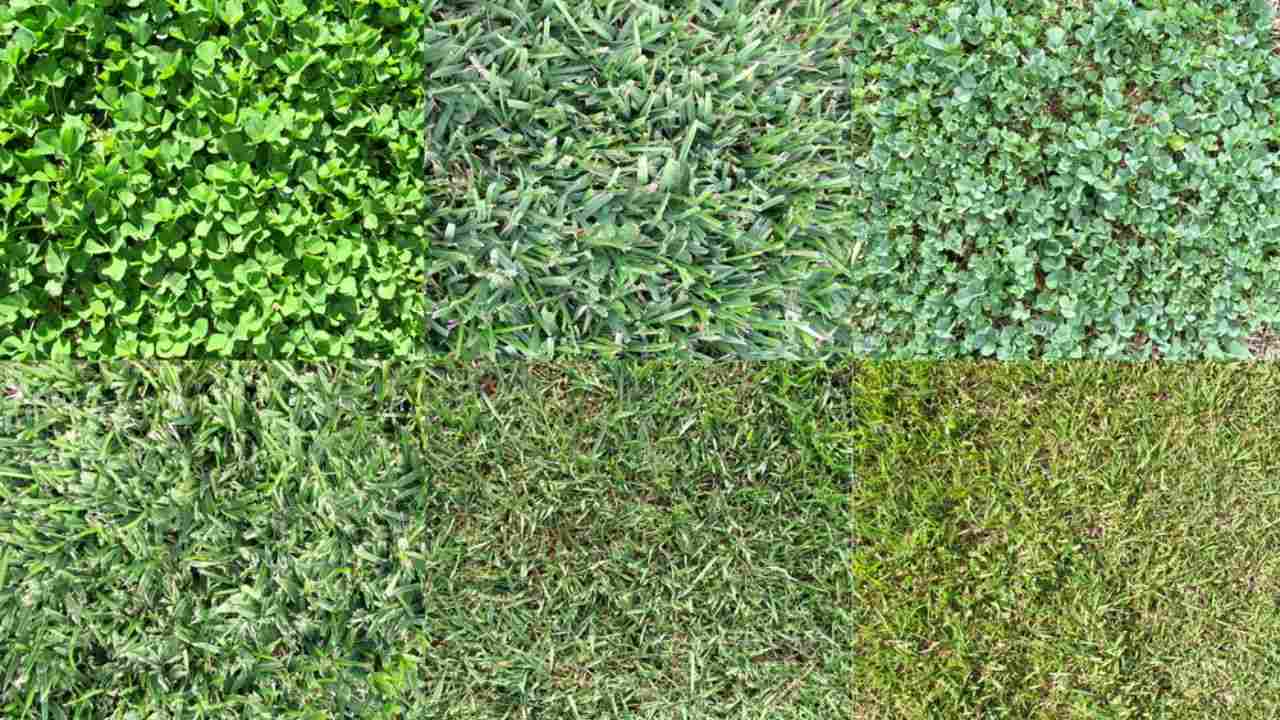
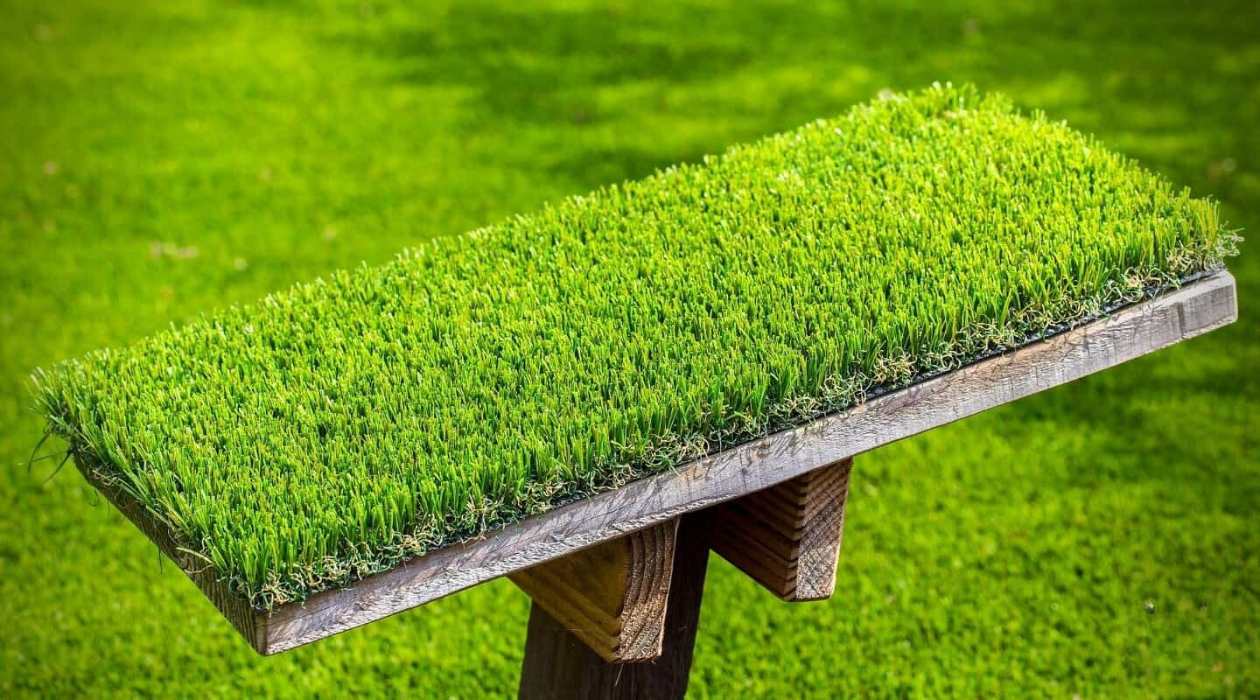
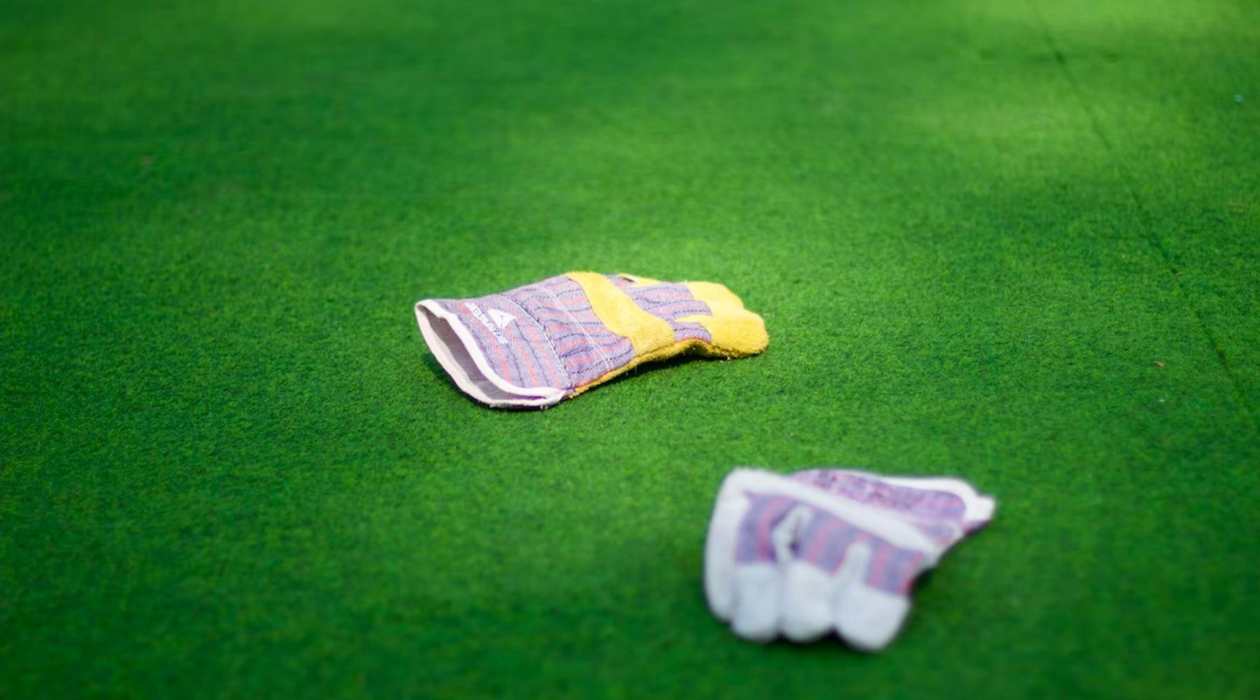
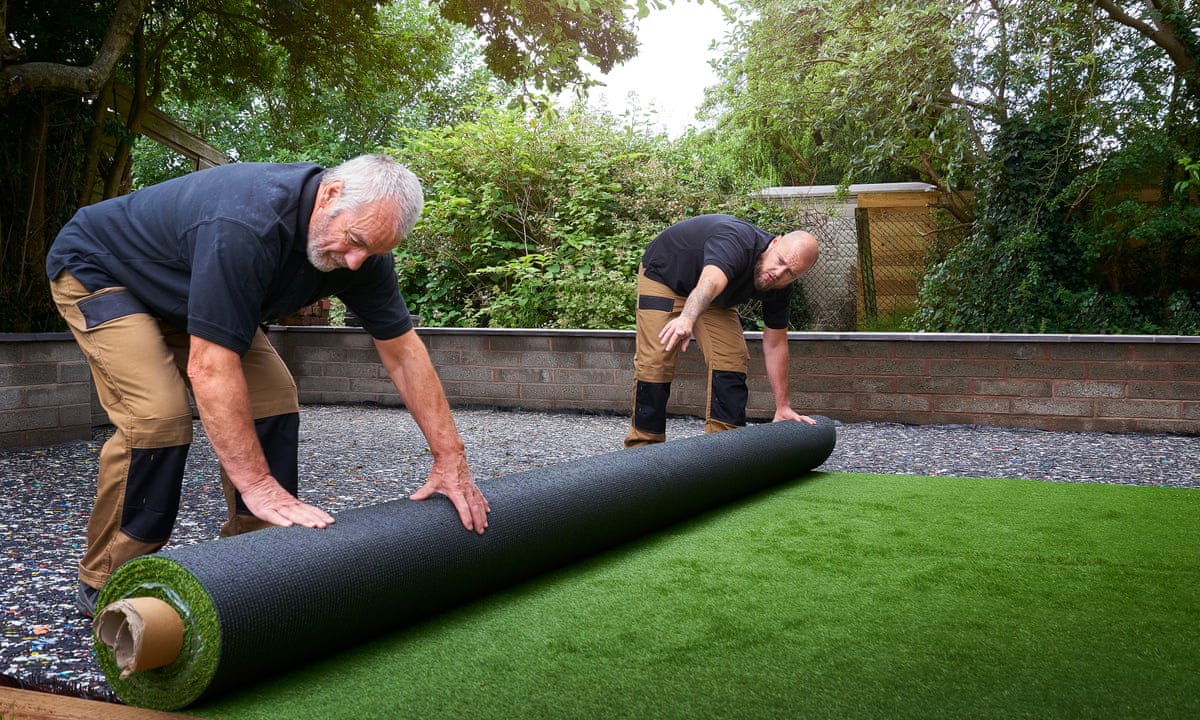
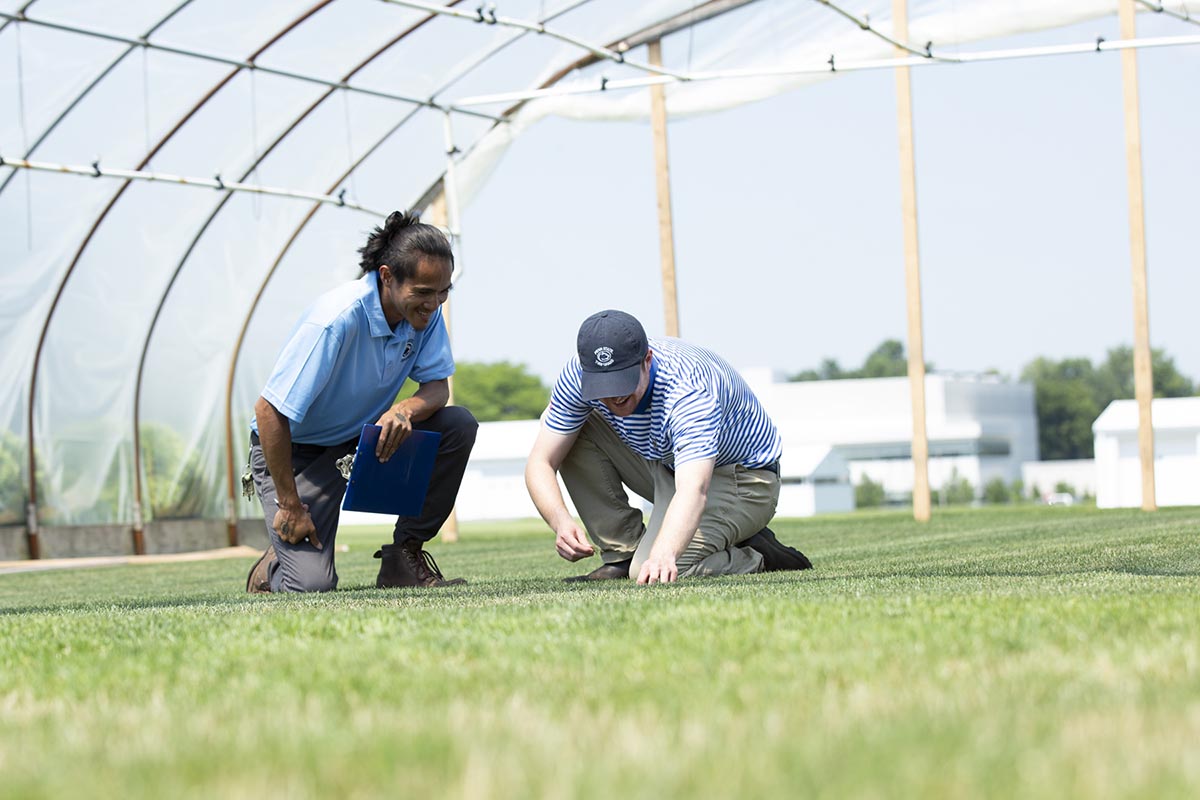

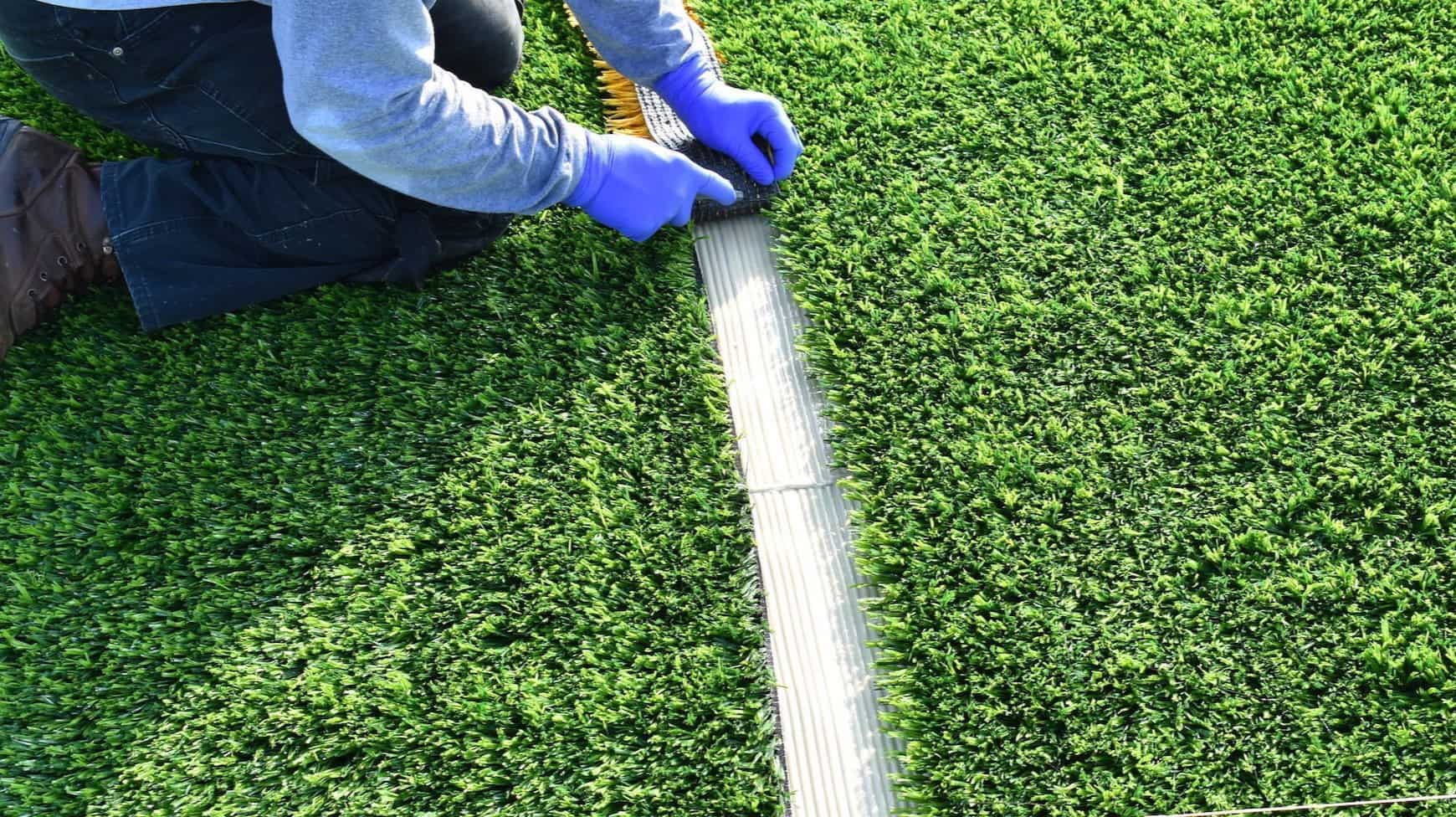

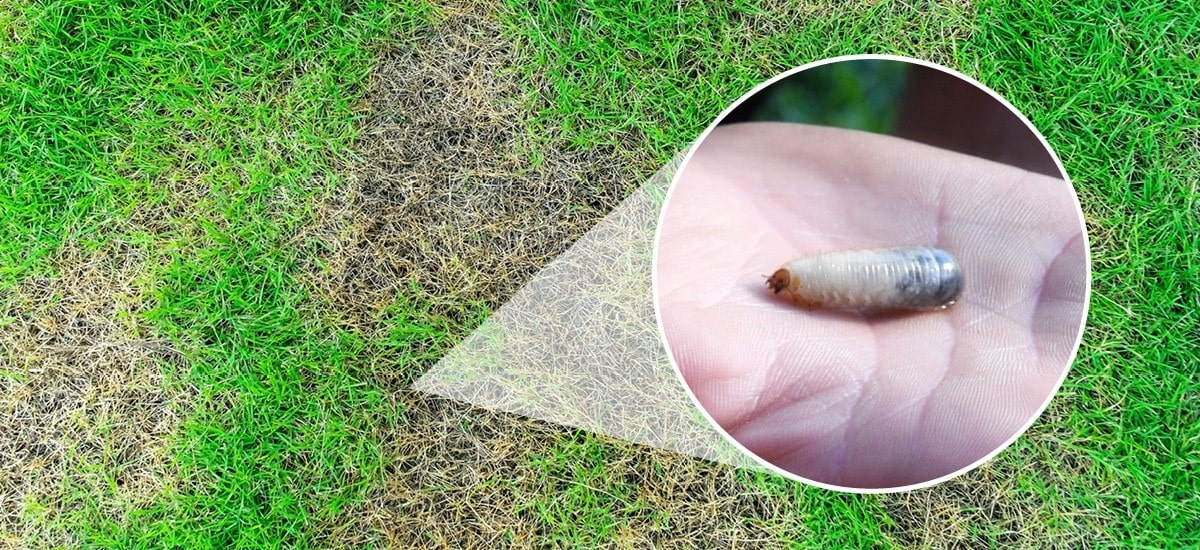
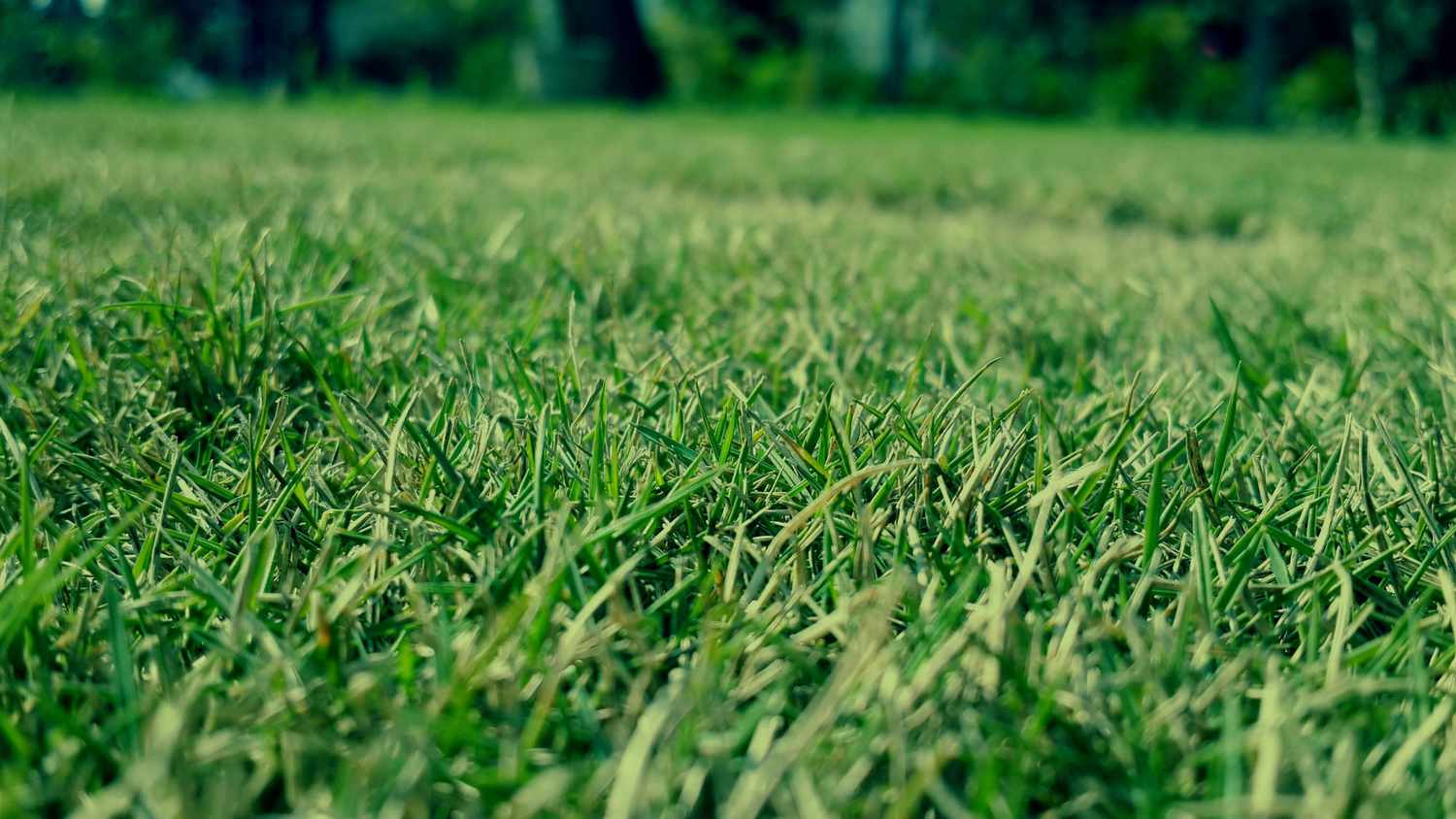
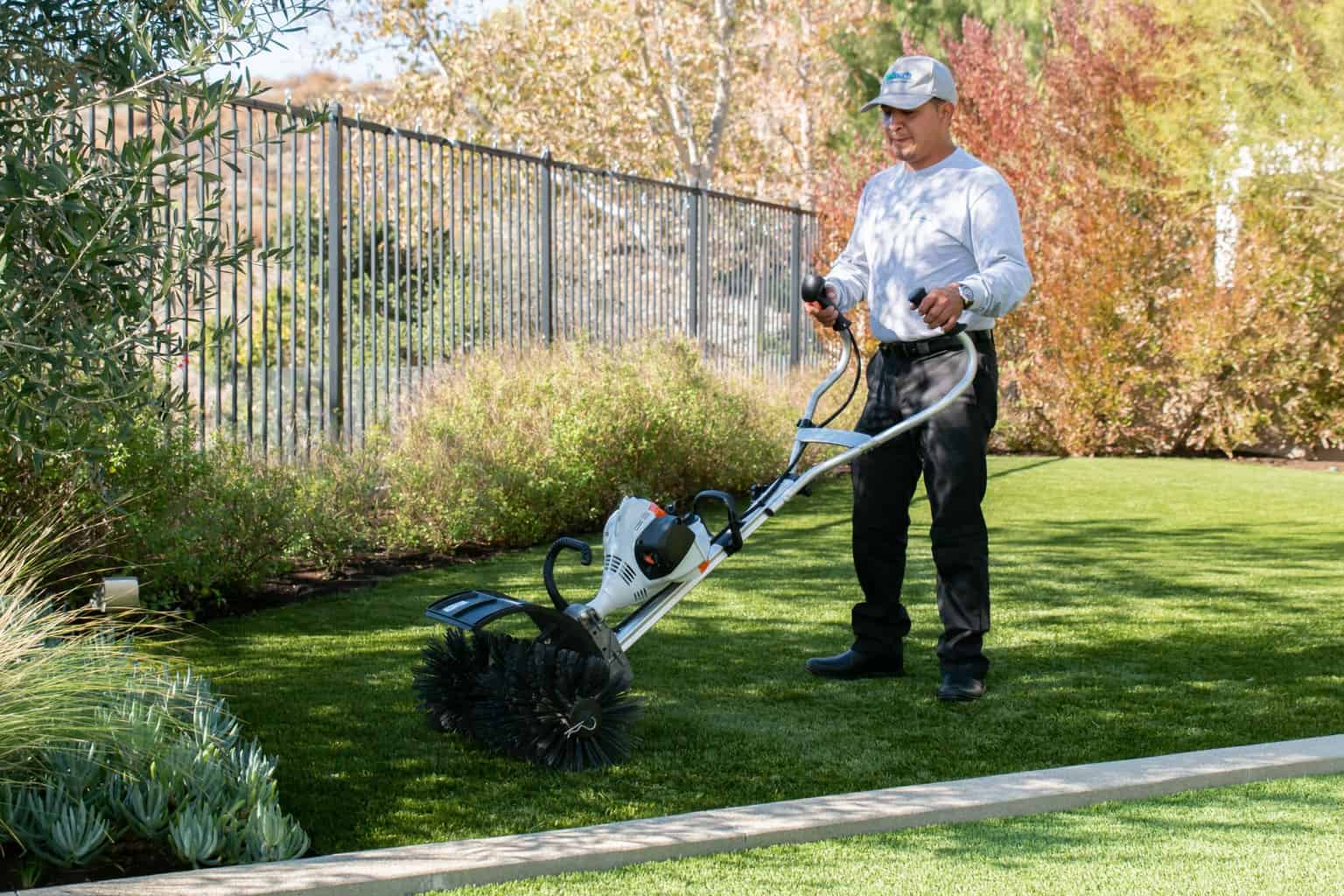

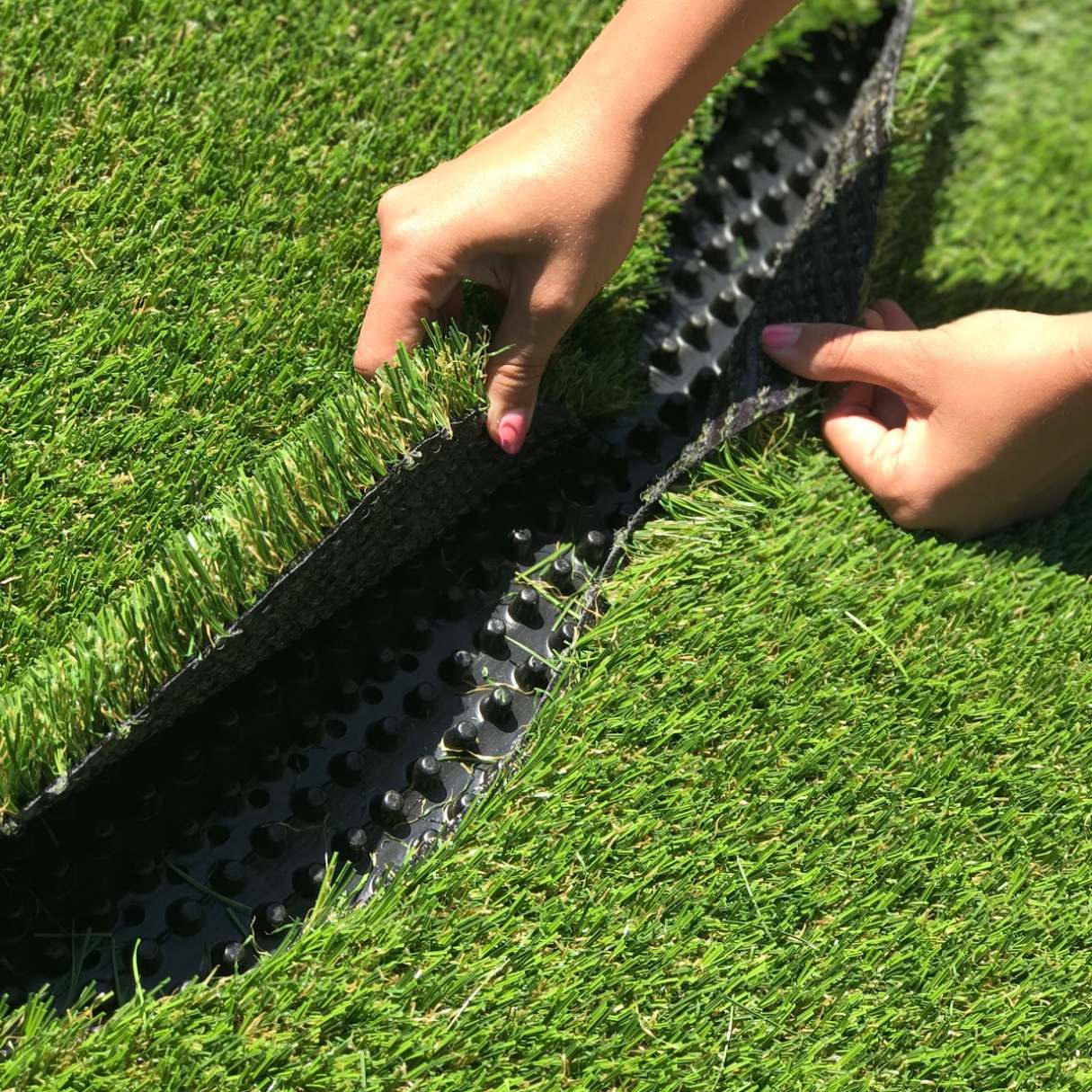

0 thoughts on “What Is Turf Grass”